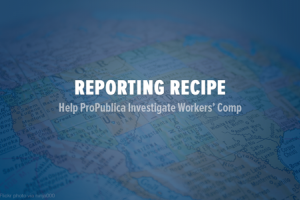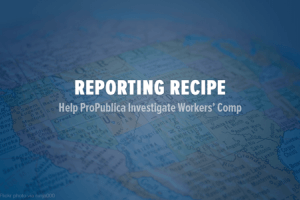
With income inequality and economic fairness at the center of national discussion, workers’ compensation provides the perfect lens for examining how the social compact has changed. It is one of America’s first safety net programs. And unlike other laws, it spells out a company’s responsibility for its workers.
The American workers’ comp system was born in the early 1900s as a “grand bargain” forged by business and labor as awareness grew about the grisly workplace accidents that came with industrialization. Workers gave up their right to sue their employers — even in cases of gross negligence — protecting businesses from lawsuit judgments that could bankrupt them. In exchange, workers were promised medical care for their injuries, enough wages to help them get by while they recovered and compensation for permanent disabilities.
But as a ProPublica investigation has found, state after state has been dismantling its workers’ comp system, denying injured workers help when they need it most and shifting the cost of work-related disabilities onto public programs like Social Security Disability Insurance.
With more than 3.7 million work-related injuries and illnesses reported in 2013, these changes are hurting households across the country. But workers’ comp legislation rarely gets significant news coverage, in part because it’s such a bureaucratic system that varies state to state.
With this Reporting Recipe, we want to make it easier for journalists to find and report stories on changes in workers’ comp policies and the impact on local workers. Read on for reporting tips, data and help finding potential sources. Still have questions? Email us at workerscomp@propublica.org.
What’s happened in your state?
New laws in 33 states essentially did three things: They reduced benefits, gave employers and insurers more control over medical care or made it more difficult for workers with certain injuries and diseases to qualify.
To give the public a better sense of the national scope of the changes, ProPublica scoured state laws and built a database highlighting the most significant provisions. You can find it here. How have policies changed in your state? What groups or companies influenced those changes? How do they compare to those in neighboring states?
For more context on policies by state, here are a few other resources that might be helpful:
Finally, many state workers’ comp systems produce their own annual reports with specific statistics. Be sure to check their websites.
Wait — aren’t workers’ comp costs going up?
Insurance premiums for workers’ comp are affected by several factors, such as the company’s history of workplace injuries, the number of workers it has and how much it pays them. When the economy is growing, as it is now, businesses hire more workers and give raises and their premiums typically go up.
But workers’ comp rates — the amount employers pay for every $100 they pay in wages — are at or near historic lows in almost every state in the country. The state of Oregon has been tracking this since the mid-1980s. Find the average premium rates for employers in your state here. Are businesses claiming the rates are rising when the data shows they’re falling?
How do I find out what the workers’ comp benefits and rules are in my state?
During our reporting, one expert told us, “If you’ve read one workers’ comp law, you’ve read one workers’ comp law.” There is no federal oversight of workers’ comp. So benefits can vary dramatically even for states right next to one another.
For example, the maximum compensation for the loss of an eye is $27,280 in Alabama, but $261,525 in Pennsylvania. We found two workers who lived within 75 miles of each other and suffered arm amputations under similar circumstances. One received $45,000 in compensation for the loss of his arm while the other received lifetime benefits that could exceed $740,000 over 50 years. Why the vast difference? They worked in different states.
You can find the maximum amount of benefits workers can receive for permanent injuries to various body parts by state in this interactive graphic.
But be careful with how you report these numbers. There’s a lot of nuance. The maximums are based on various circumstances, such as the worker’s wages, the severity of the injury and sometimes age and education. Read our methodology page as well as the footnotes that accompany each state. For more detail about calculating the benefits, check the state law or contact your state’s workers’ comp bureau. Here’s a list with links to their workers’ comp agencies by state.
So how do I find workers who’ve been affected?
We asked our readers to tell us about their experiences with workers’ comp and have heard from more than 300 people so far, including nearly 200 employees who said they are interested in being put in touch with reporters in their region. Journalists can sign up to be matched with a potential source by completing this form. Here’s a quick look at the workers’ comp stories we’ve received so far:
Several states including Florida, Illinois and California also allow the public to browse recent decisions or search for workers’ comp cases by claimant name or employer.
In addition, local workers’ comp attorneys, unions and worker advocacy groups can be helpful in finding injured workers. The Workers’ Injury Law & Advocacy Group has a directory of lawyers who specialize in representing injured workers with workers’ comp claims. The National Council for Occupational Safety and Health and Interfaith Worker Justice both have information about local worker centers around the country.
Get your story funded: If you’re a local journalist, see our Beacon partnership to learn more about how to raise funds to report this story.



